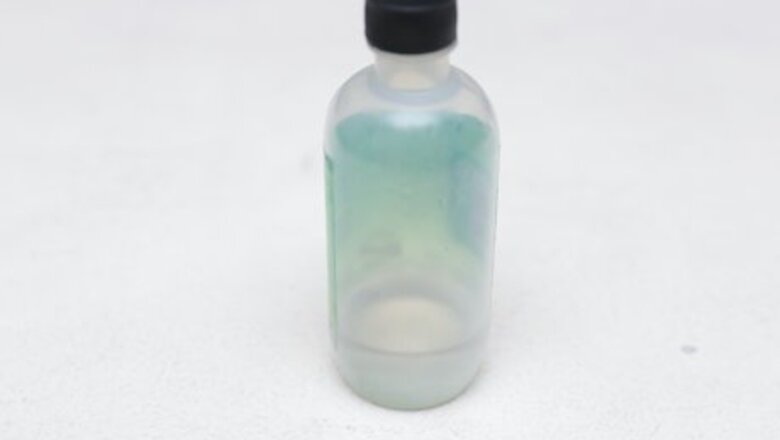
views
Fluid Thinning
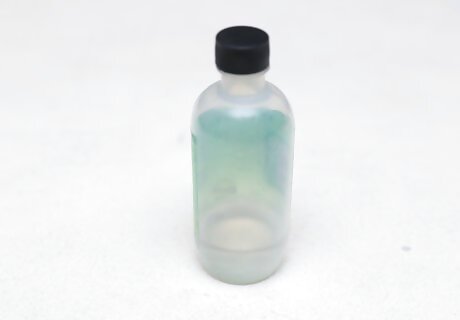
Purchase a correction fluid thinner. These thinners can be found at most art stores and office supply centers. Most manufacturers of correction fluid sell matching thinners that you can use to thin out thick paint or even completely restore dry paint. Make sure you buy your fluid's matching thinner as each brand has its own formulation. Correction fluid is made with chemical solvents because these solvents evaporate into the air more quickly than water. This means that you don't have to wait very long for correction fluid to dry. If you can't find the right thinner for your correction fluid, buy a generic brand instead. It won't work as well as the correct fluid might but it will be much better than nothing.

Prepare your workspace. Lay out newspaper or use paper plates to protect the surface you're working on. Work in a well ventilated space so that you don't inhale harmful fumes. Have a sheet of scrap paper ready so that you can test the thickness of the correction fluid. If you have sensitive skin, consider wearing gloves while you work. Avoid inhaling the solvent fumes. Solvent fumes are hazardous to your health and can cause damage to your nervous system, liver and many other organs. If possible, work outside. This provides the maximum amount of ventilation of hazardous fumes.
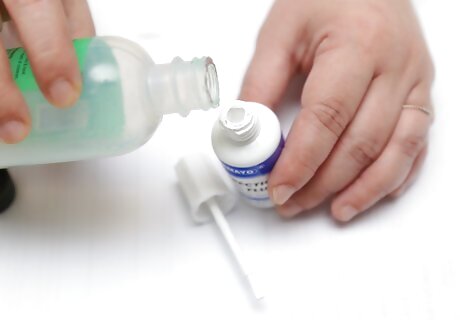
Add thinner to the fluid. Most commercial thinners come with a dropper attached to the lid. This allows you to add tiny drops of solvent to the correction fluid at a time. First, add three or four drops to the correction fluid. Close the lid tightly and shake the bottle for one minute. Next, unscrew the cap and paint a line of correction fluid onto the scrap paper. If it's thin enough, you can use it immediately. If not, add a few more drops of thinner and repeat the process. Don't stir the correction fluid to mix in the thinner. This will cause the solvent to evaporate more quickly and expose you to more hazardous fumes.
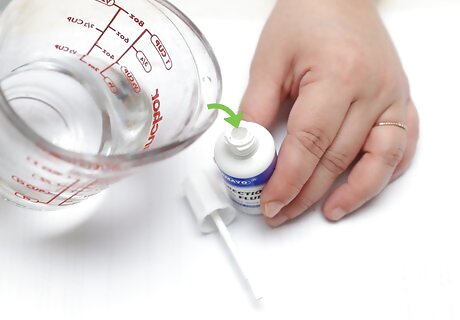
Use water to thin the fluid. If you don't have time to find the proper correction fluid thinner for your product, you can use water as a thinner. However, the correction fluid won't dry as quickly and it may develop other issues as well. Add a few drops of water to the correction fluid. Screw on the cap and shake the fluid for one minute. Then, test the thickness of the fluid by painting a line on a scrap piece of paper. If it's not thin enough, add a few more drops of water and repeat the process. Some correction fluids react badly to added water. Always check the manufacturer recommendations before putting water in a correction fluid.
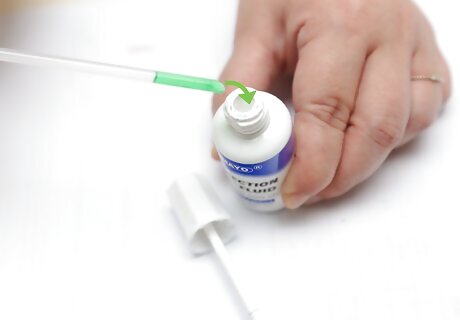
Use non-acetone nail polish remover. Non-acetone nail polish is formulated with chemicals that are similar to correction fluid thinner. This method won't work as well as using the manufacturer thinner but it will work in a pinch. Add one or two drops of the nail polish remover and screw the lid onto the correction fluid. Shake the bottle for one minute. Next, test the thickness of the fluid by painting a line onto a scrap sheet of paper. If it's not thin enough, add another drop of nail polish remover and repeat the process. It's easy to add too much nail polish remover. Therefore, you should only add one to two drops at a time. Otherwise, your correction fluid will be too thin.
Fluid Care
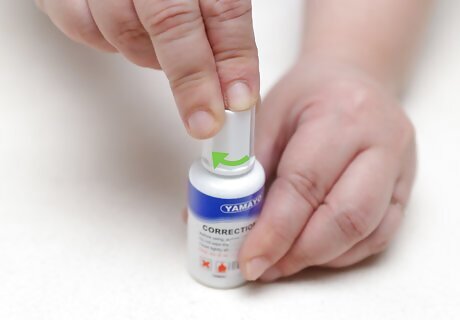
Keep the lid on. Correction fluid can dry very quickly. It's not impossible to restore dried fluid but it's very time consuming and annoying. To avoid this problem, keep the lid on the correction fluid whenever you're not using it. If you lose the lid, cover the correction fluid with plastic wrap and secure it with a rubber band. Keep the Styrofoam insert. Some brands of correction fluid come with a Styrofoam insert that lines the top of the lid. Try to keep this insert in the package as it helps keep moisture in the container.
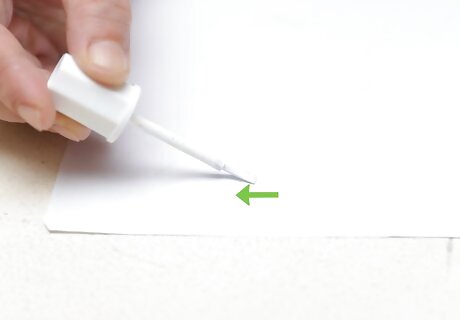
Maintain the fluid's consistency. Once your correction fluid dries completely, it's very difficult to soften again. Prevent this problem by monitoring the thickness of your correction fluid. Occasionally check your correction fluid to make sure it's not drying out by painting a line onto a piece of scrap paper. If the solution is becoming too thick, add a few drops of thinner and shake it up.
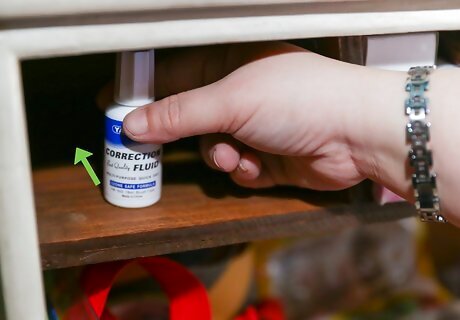
Store the correction fluid safely. Keep it in a cool, dry place that's out of the reach of children. Correction fluid contains many potentially hazardous chemicals that can be harmful when ingested. Similarly, be aware of who has access to your correction fluid. Some people abuse substances such as correction fluid by inhaling the fumes to get high. This is incredibly dangerous and can lead to brain damage and heart failure. If you or someone you know is addicted to using inhalants, contact an inhalant addiction treatment center or call a toll-free addiction recovery hotline at 1-888-319-2606.
Fluid Application
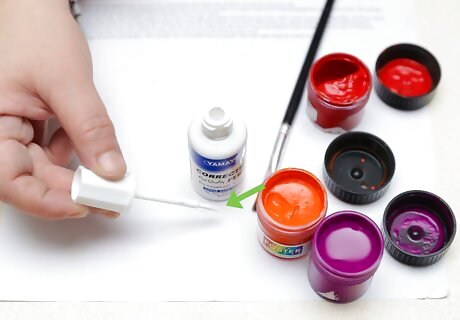
Check the consistency of the fluid. Your correction fluid should be slightly thinner than acrylic paint. It should be easy to paint onto surfaces but it should also be thin enough that the application is smooth. If your correction fluid is too thick your paper will have a textured area where the fluid dries. If it's too thin, it won't cover your mistakes properly. The thinner the fluid, the less opaque it is. If the fluid is too thick, thin it out with the correction fluid thinner, water, or non-acetone nail polish remover described in the previous method. If the fluid is too thin, remove the cap and let the fluid sit in a well-ventilated place. Every ten minutes give the fluid a stir and test the thickness.
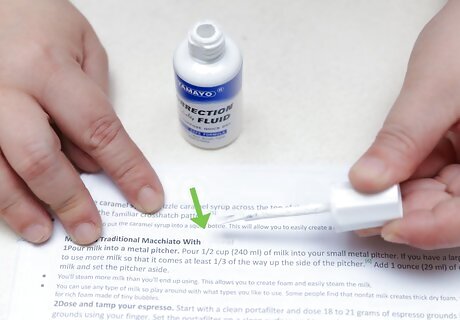
Apply a thin coat of correction fluid. You can use the attached brush or a clean brush of your choice. Carefully paint a thin layer of correction fluid over your mistake. Don't worry if you can still see a faint outline of the error; you can apply another thin coat to make the area more opaque. Allow the first coat to completely dry before applying a second coat. Each layer needs to dry for at least two minutes. If you try to paint on a new layer while the old one is still wet, the correction fluid will become clumpy and uneven. Once all of the layers are dry, you can draw or write over the surface.
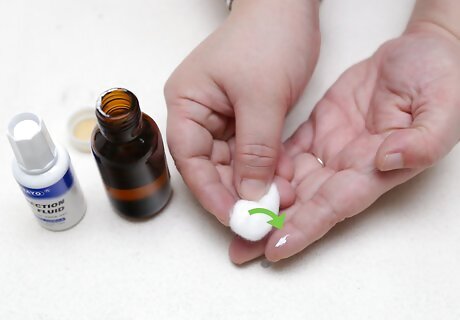
Clean your workspace. If you have any correction fluid on your hands it may not come off with soap and water. If this is the case, rub baby oil over the correction fluid to remove it from your skin. If you get any correction fluid on your work surface simply wait for it to dry before gently rubbing it off. If there's leftover residue use a wet sponge to wipe it away. Lastly, remove correction fluid from your clothing by letting it dry, scraping it off, and then gently washing the affected area. If washing the clothing doesn't help remove the correction fluid, try spraying WD-40 or Windex onto the affected area and letting it soak in. After a few minutes, gently wash the area again.




















Comments
0 comment